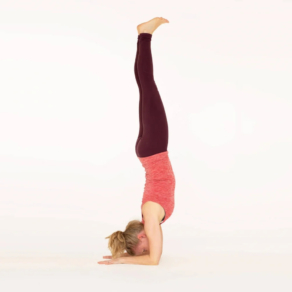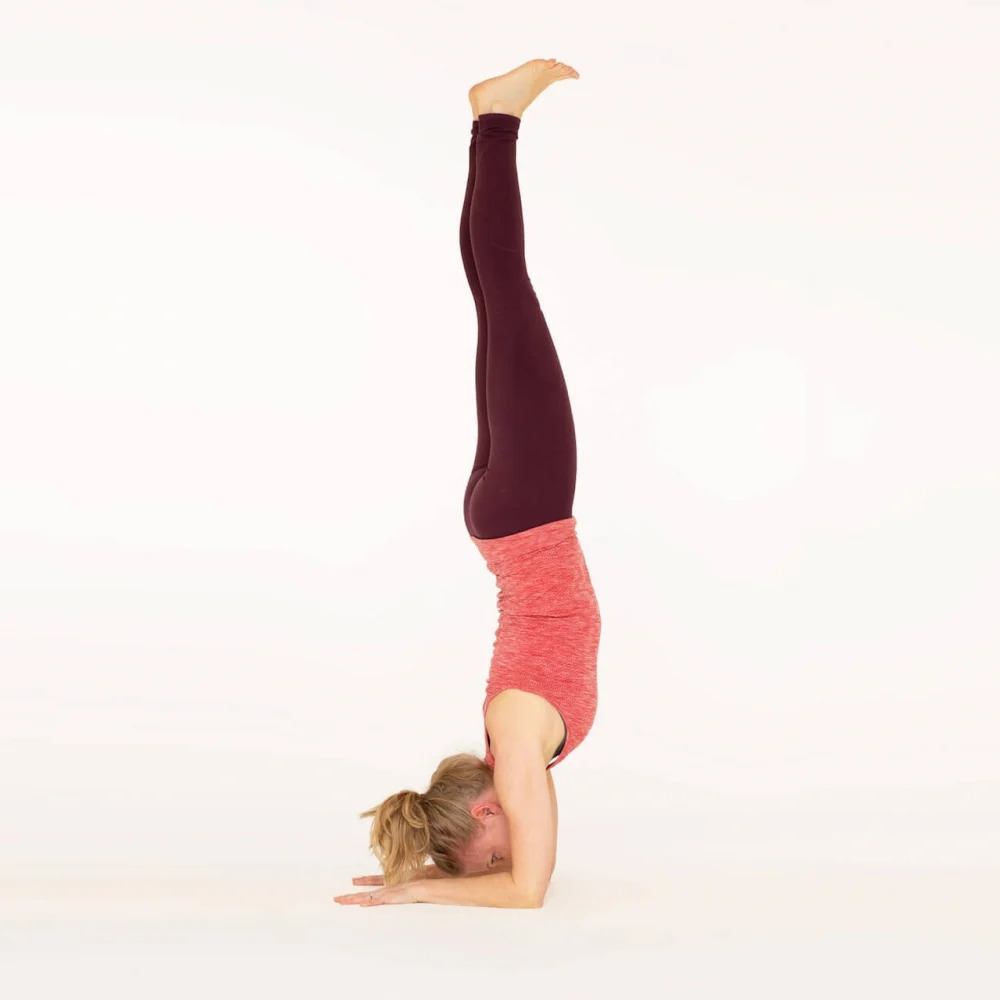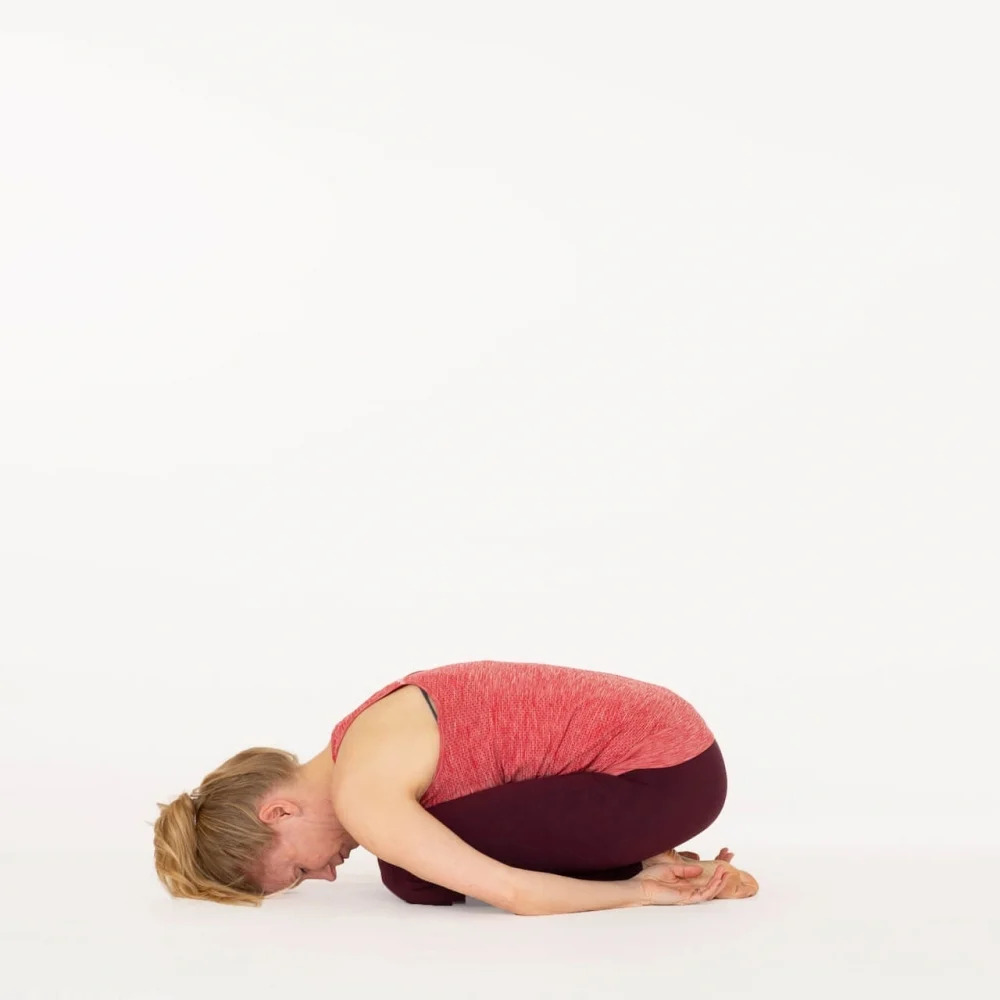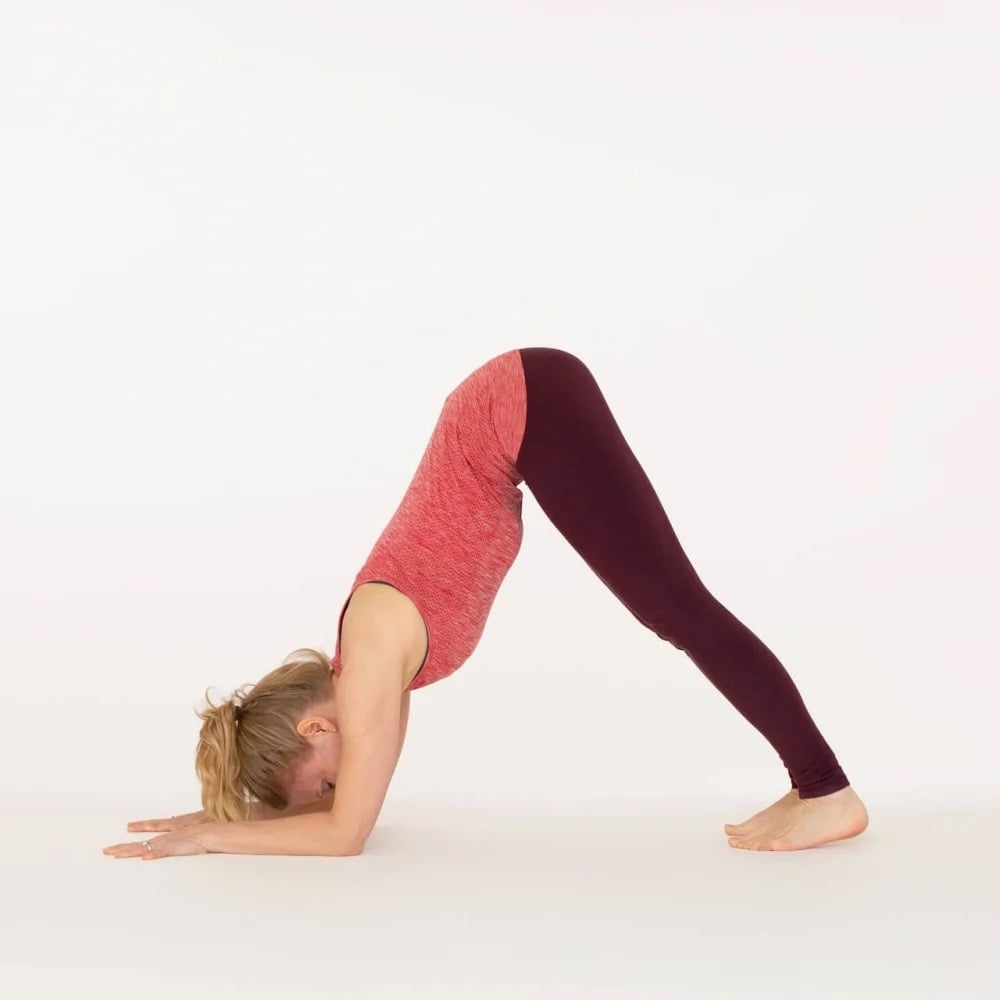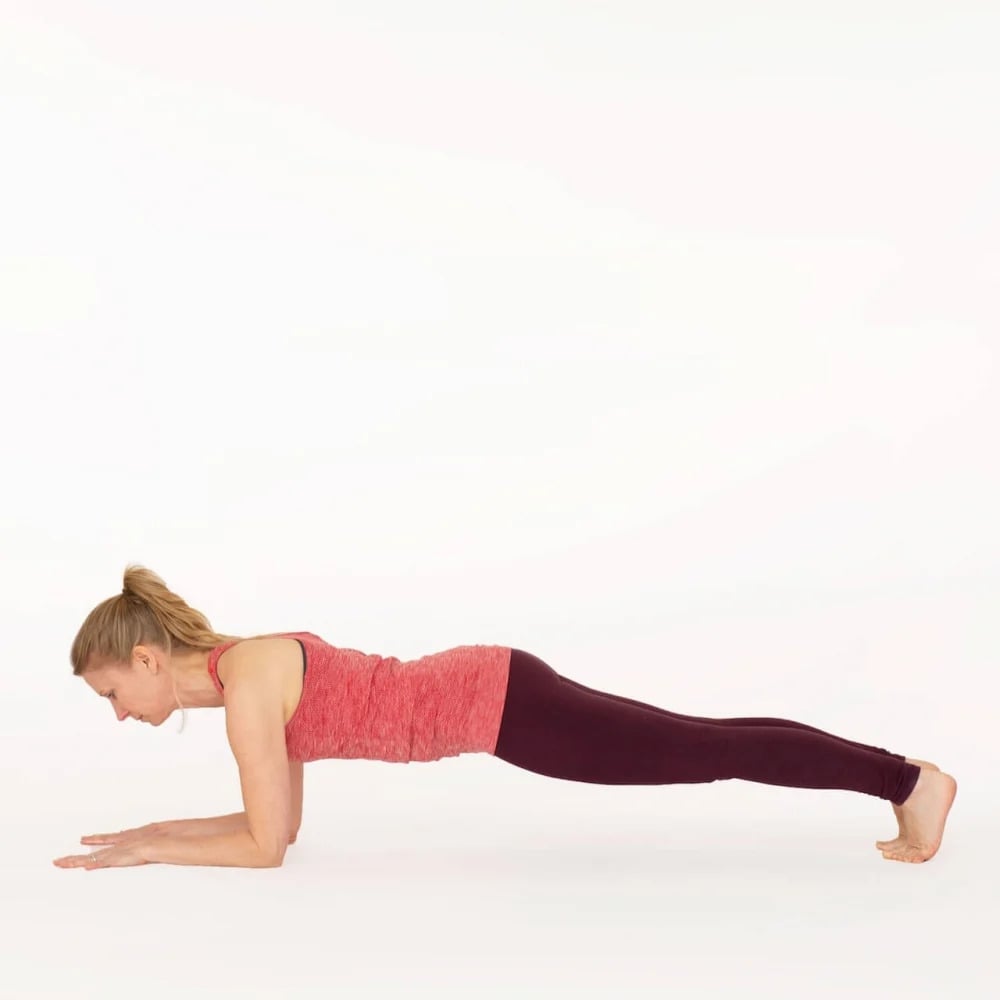Step by step
- From an all fours position, place your elbows, directly under your shoulders. You can take hold of the elbows with the opposite hands to ensure that your elbows are shoulder-width apart.
- Place your palms flat on the floor with your forearms parallel.
- Press down through your forearms and engage your hands by pressing down with the fingertips, hollowing out your palms slightly (Hasta Bandha).
- Tuck your toes, lift your hips to the sky and come up into Dolphin pose.
- Keep pushing the ground away with your forearms, firm your shoulder blades and bring them down your back.
- Externally rotate your upper arms (outwards) and without moving your forearms, sense that you’re actively drawing them in towards each other.
- Step one foot in closer to the middle of your mat. Keep that knee bent.
- On an exhalation, press into the foot of the bent leg to lift your other extended leg up.
- Start with some small hops to practise feeling the weight in your upper body.
- When you become stronger and your body becomes used to the feeling of being in the first stage of the pose, press into the foot of your bent leg with a little more energy to lift your extended leg completely.
- Eventually, you will kick both legs up straight.
- Once up in the pose, keep pressing into the forearms and palms, knit your front ribs in, focus on your core by drawing your navel towards your spine, and lengthen your tailbone towards your heels
- Maintain energy in the legs by internally rotating your inner thighs and lengthening out through your heels or your pointed toes
- To come out of the pose, lower one foot, followed by the other back into Dolphin pose, bend your knees, and r est in Balasana (Child’s Pose) for a few breaths before coming up.
Beginners’ tips
- Take time to build up strength in your shoulders and core, and to cultivate awareness of the position of your shoulders, elbows, ribcage and tailbone. Practising Dolphin pose for up to 20 breaths is a good shoulder and core strengthener.
- Be patient and master each step before moving on
- Use a wall as a way to build up confidence in the pose.
- Watch Katy Appleton’s tutorial and Anat Geiger’s ‘Pinch it’ class to learn more ways to build up to Forearm balance.
Benefits
- Strengthens the shoulders, arms and core
- Good balancing practice
- Draws fresh blood into the upper body while stimulating drainage and circulation to the legs
- Energises mind and body
Watch out for
- Elbows can splay out – be mindful of setting the position of your elbows under your shoulders before attempting to kick up – maintain the strength and integrity of your foundation by pressing firmly into the forearms and firming the shoulders blades on your back.
- Keep looking between or slightly in front of your hands – do not attempt to release your head down to the floor – the head stays off the floor in this pose
- Remember to alternate the leg you raise first as we always have one side that feels stronger and more comfortable than the other – using both legs ensures balance is maintained in the body.
- If you have high blood pressure or glaucoma, inversions (where the head is lower than the heart) are not recommended.
- There is debate over whether practising inversions while menstruating is safe for women. However, the evidence is not clear on either side (indeed it would be very difficult to research). Legs up the wall pose is a good alternative which still provides many benefits that inversions offer.
Variations
- You can also do an L-shape variation of this pose using a wall:
- Bring the short edge of your mat to a wall.
- You need to measure the length of your leg first so sit in Dandasana with your feet flat against the wall and place something next to your hips – this is where your elbows will be when you’re in the pose.
- Come to your all fours position with your toes touching the wall behind you, so that you are facing away from it.
- Bring your elbows down on the mat as for regular Forearm Balance. Check that they are level with your marker.
- Come up into Dolphin Pose, with your heels resting against the wall
- Start to walk up the wall with your feet.
- Place both feet flat into the wall, hips’ height.
- Start to straighten your knees so that you come into a 90-degree angle with your legs parallel to the floor.
- You may now start to experiment lifting one leg and then the other.
- To come out of the pose, slowly walk your feet down the wall back into your Dolphin Pose, bend your knees and rest in a wide legged Child’s Pose for a few breaths.

